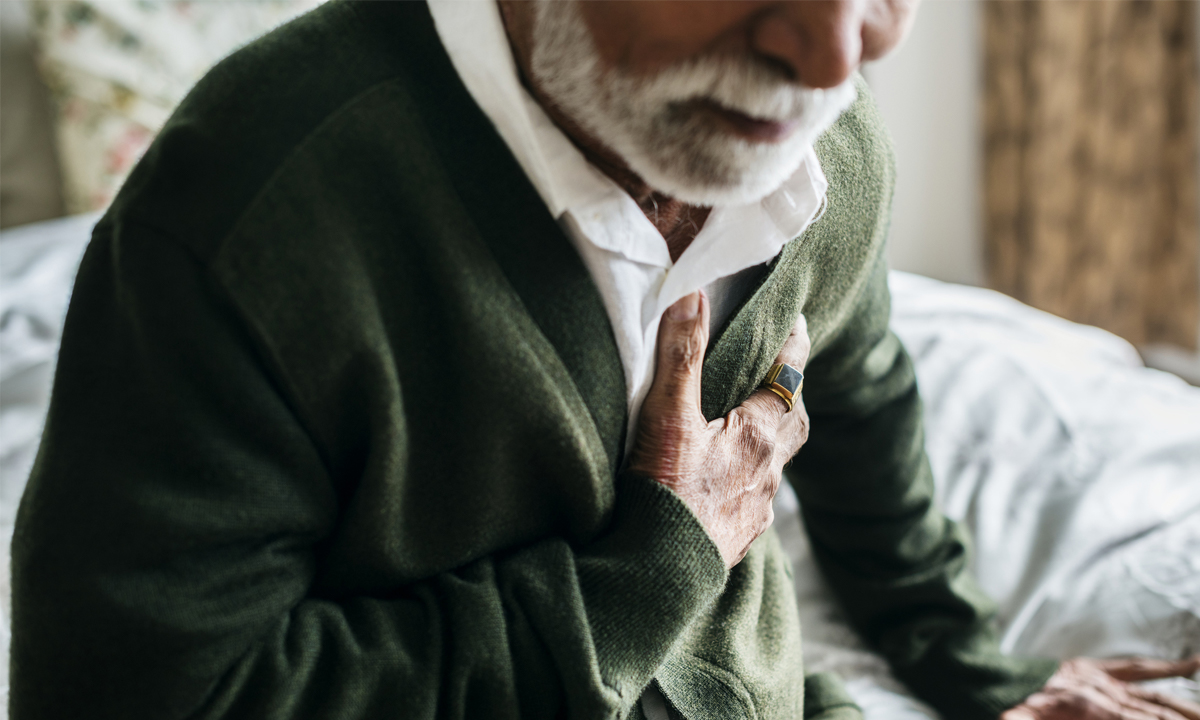
It is estimated that 1 in every 7.5 people in the US will die of sudden cardiac death.1 Survival following out-of-hospital cardiac arrest has increased in recent years, from 10.2% in 2006, to 12.4% in 2015.1 However, only 9% of those surviving to hospital discharge were classified as having good functional status. Therefore, significant long-term neurologic impairment is a common outcome of cardiac arrest.
Along with CPR and defibrillation, epinephrine is a central part of resuscitation protocols for advanced life support. It is thought to increase the likelihood of spontaneous return of circulation via vasoconstriction of arterioles, leading to increased coronary blood flow.2 However, it also can increase myocardial oxygen demand, increase platelet aggregation, and decrease blood flow through the microcirculation, including to the cerebral cortex.2 Observational studies have shown improved survival of cardiac arrest following treatment with epinephrine, but large studies have also reported an increased incidence of severe neurological outcomes associated with its use.3,4
The Study
Given the lack of clarity regarding its benefit, researchers in the United Kingdom carried out a large, randomized controlled trial across five ambulance services, of epinephrine versus placebo along with standard of care.5 Patients were treated by paramedics in the field, and initially received CPR and defibrillation. If this was unsuccessful, they were randomized to epinephrine versus placebo by opening a trial pack containing one of the two agents. The packs were identical and contained 10 prefilled syringes containing either epinephrine 1mg or 0.9% saline, administered via IV or intraosseus route every 3-5 minutes. This was continued until return of circulation was achieved, resuscitative efforts were discontinued, or the patient was transferred to a hospital. In-hospital care was determined by the treating physicians, but was guided by national protocols. The primary outcome was survival to 30 days, with secondary outcomes to look at survival to hospital discharge, and rates of neurologic outcomes.
The enrolled population was nonpregnant adults over the age of 16 who experienced an out-of-hospital cardiac arrest. Those who arrested secondary to asthma or anaphylaxis were excluded. Eight thousand and sixteen patients were enrolled, 3999 in the placebo arm and 4015 in the epinephrine arm. Baseline characteristics were similar between the groups with a mean age of 69 years and 65% were male. Around 60% were witnessed arrests, and 60% had bystander-performed CPR. 19% of patients in each group initially had shockable rhythms.
The Results
The patients treated with epinephrine had a much higher rate of return of spontaneous circulation (36% versus 11.7%) and had a small increase in survival at 30 days, with 3.2% of epinephrine-treated patients surviving versus 2.45% in the placebo group (OR of survival 1.18, 95% CI 0.86 to 1.61).5 However, survivors in the epinephrine-treated group had higher rates of severe neurologic impairment; 31% (39/126) versus 17.8% in the control group (16/90 patients).5 Furthermore, there was no significant difference in the number of patients surviving with good neurologic outcome (2.2% and 1.9%).
Sensitivity analyses did not detect any effect on whether the arrest was witnessed, if bystander CPR was done, initial rhythm, or the time to drug administration, on patient outcome. One limitation of the trial was the lack of data on management of patients following admission to hospital.2 For example, no data was reported on rates of use of therapeutic hypothermia, which can improve neurological outcomes.
Indications
So how to interpret these findings? It appears that use of epinephrine in out-of-hospital cardiac arrest is associated with improved return of circulation and survival at 30 days. However, considerably more patients were left with severe neurologic impairment in the epinephrine-treated group. The authors did not speculate on the possible causes and did not identify any subgroups that might have experienced more benefit or risk from epinephrine treatment. In their discussion, the authors note that the numbers needed to treat (NNT) to save one life with epinephrine was high at 112.5 This is in contrast to other interventions in cardiac arrest such as early defibrillation (NNT 5) or bystander CPR (NNT 15); again, emphasizing that interventions that rapidly restore circulation are most effective in cardiac arrest. It appears that much more work will need to be done to establish the best use of epinephrine in situations of cardiac arrest, both to optimize patient survival and longer term outcomes.
-
Resources
- Benjamin EJ, Virani SS, Callaway CW, et al. Heart Disease and Stroke Statistics-2018 Update: A Report From the American Heart Association. Circulation 2018;137:e67-e492.
- Callaway CW, Donnino MW. Testing Epinephrine for Out-of-Hospital Cardiac Arrest. The New England Journal of Medicine 2018. DOI: 10.1056/NEJMe1808255
- Loomba RS, Nijhawan K, Aggarwal S, Arora RR. Increased return of spontaneous circulation at the expense of neurologic outcomes: Is prehospital epinephrine for out-of-hospital cardiac arrest really worth it? J Crit Care 2015;30:1376-81.
- Hagihara A, Hasegawa M, Abe T, Nagata T, Wakata Y, Miyazaki S. Prehospital epinephrine use and survival among patients with out-of-hospital cardiac arrest. Jama 2012;307:1161-8.
- Perkins GD, Ji C, Deakin CD, et al. A Randomized Trial of Epinephrine in Out-of-Hospital Cardiac Arrest. The New England Journal of Medicine 2018.


